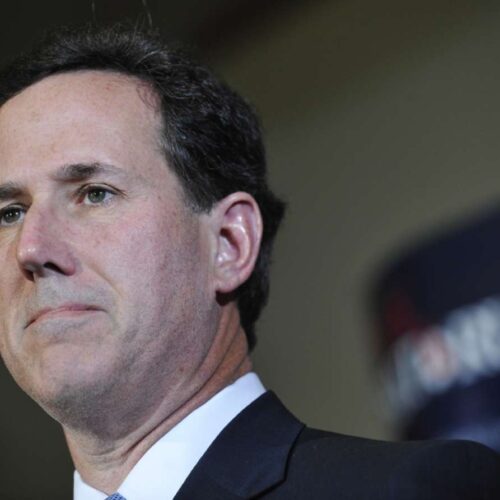Introduction
What can the people who run super PACs do with all the cash they have collected when their favorite candidate drops out of the race?
“They can do pretty much anything they want with the money,” said Viveca Novak, communications director at the Center for Responsive Politics. “They can have a margarita party in the Bahamas.”
Former Pennsylvania Sen. Rick Santorum’s decision to suspend his presidential campaign Tuesday means the “Red, White and Blue Fund” super PAC, which supported him, is without a candidate. The organization and its benefactors helped the under-funded Santorum stay in the game.
The group will continue to advocate for conservatives, but there’s no rule that says it has to.
“Pretty much any use of super PAC money — other than coordinating expenditures with candidates or contributing to candidates – would be a legal and permissible use,” said Paul Ryan, an attorney at the nonpartisan Campaign Legal Center.
Practical considerations would likely prevent super PAC operatives from doing something extravagant — like buying a yacht or taking a junket to the Caribbean. Such a purchase would be “career suicide,” Ryan said.
Red, White and Blue founder Nick Ryan said the PAC will work to defeat President Barack Obama, “strengthen the conservative majority in the House of Representatives” and “oust the liberal leadership in the Senate.”
Super PACs are permitted to collect unlimited sums from individuals, unions and corporations and spend the money on ads and other materials supporting or opposing a candidate. The only prohibition is that they cannot coordinate their expenditures with the candidates’ campaigns.
Through February, the Red, White and Blue Fund raised nearly $6 million, which provided Santorum with a significant boost. After a slow start, Santorum’s campaign raised just shy of $16 million during the same period, while Romney raised about $75 million — and the main super PAC supporting Romney’s candidacy raised an additional $43 million.
Santorum chalked up an unexpected victory in Iowa’s first-in-the-nation caucuses. Afterward, his candidacy surged, especially among conservative voters, who helped him rack up wins — and delegates — particularly in the South and Midwest.
In January and February, his campaign raised $13.5 million, compared to Romney’s $18.5 million. But Santorum ultimately failed to keep up with the former Massachusetts governor, who one recent poll showed beating Santorum even in Pennsylvania, which is slated to hold its primary on April 24.
Three individuals contributed more than $1 million to the Red, White and Blue Fund through February: Wyoming businessman Foster Friess ($1.6 million) retired Louisiana energy executive William Dore ($1.5 million) and Annette Simmons ($1 million), the wife of GOP super-donor Harold Simmons.
While records show the Red, White and Blue Fund ended February with just $365,000 in the bank, during March it spent more than $2.5 million on efforts to increase Santorum’s share of the vote in primaries across the country.
Friess personally spent $71,600 on advertisements and events touting Santorum ahead of the Wisconsin primary last week, where Santorum finished 7 percentage points behind Romney.
A second super PAC called Leaders for Families raised about $150,000 to aid Santorum’s campaign, spending most of its money in Iowa, where Santorum first gained steam after his unexpected first-place finish.
The Red, White and Blue Fund hasn’t reported spending any money on Santorum’s behalf this month, while Leaders for Families hasn’t been active in any GOP primary since New Hampshire, which was held on January 10. That group hasn’t been required to file a campaign finance report with the Federal Election Commission since January, at which time it reported ending 2011 with less than $4,400 cash on hand.
A representative of Leaders for Families could not immediately be reached for comment.
As for Santorum’s candidate committee, which had $2.6 million on hand at the end of February, there are several options. He must give back contributions meant for the general election. Beyond that, he can give the money to charity, transfer it to a state or national party committee, pay for “winding down” expenses for his campaign or keep it and run again.
When Texas Gov. Rick Perry dropped out of the GOP presidential race, he went so far as to ask the FEC if he could turn his campaign committee into a super PAC, a request that the commission granted.
Staying in the political game appears to be a likely outcome, Santorum intimated during a press conference Tuesday – the same day his three-year-old daughter, Bella, who had been suffering from pneumonia, was released from the hospital. (Bella also suffers from a rare genetic condition called Trisomy 18.)
“While the presidential race for us is over, and I will suspend my campaign effective today, we are not done fighting,” he said. “This game is a long, long, long way from over.”
Aaron Mehta contributed to this report.
Read more in Money and Democracy
Money and Democracy
Occupy Obamacare video: ‘The awakening of the sinister Dr. Obamacare’
Money and Democracy
Romney, GOP seek $50,000 for joint fundraising committee
‘Founding Member’ status granted for first 1,000 donors


Join the conversation
Show Comments